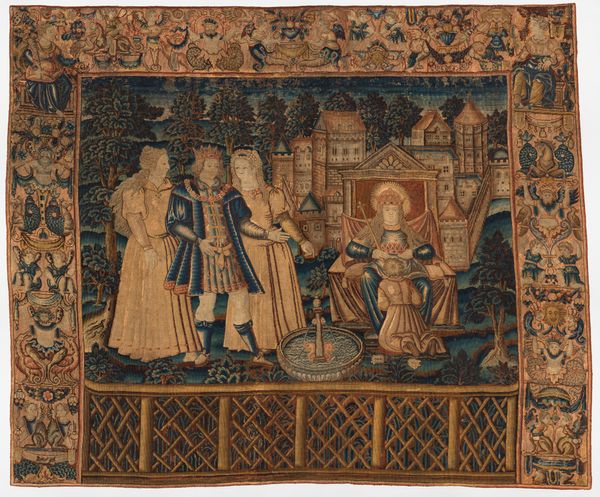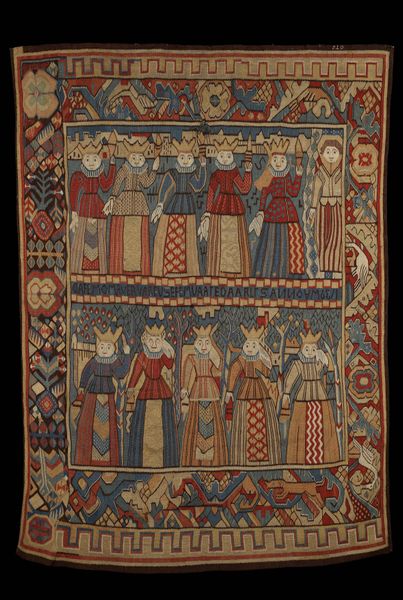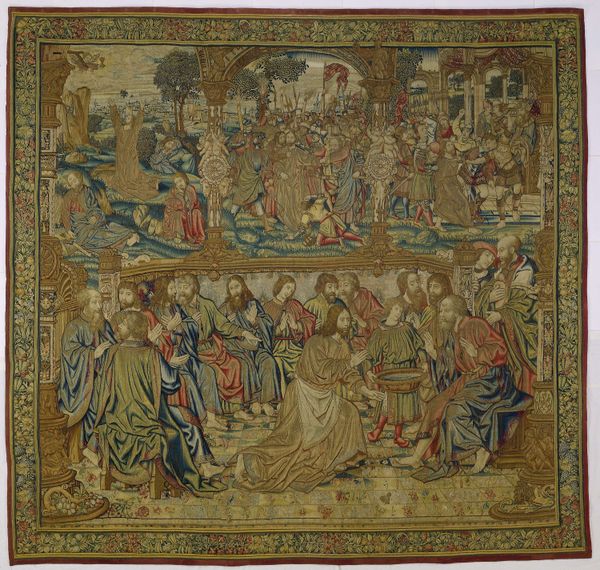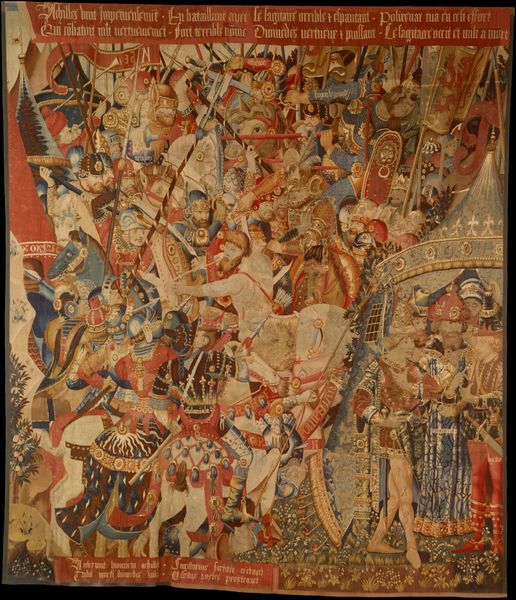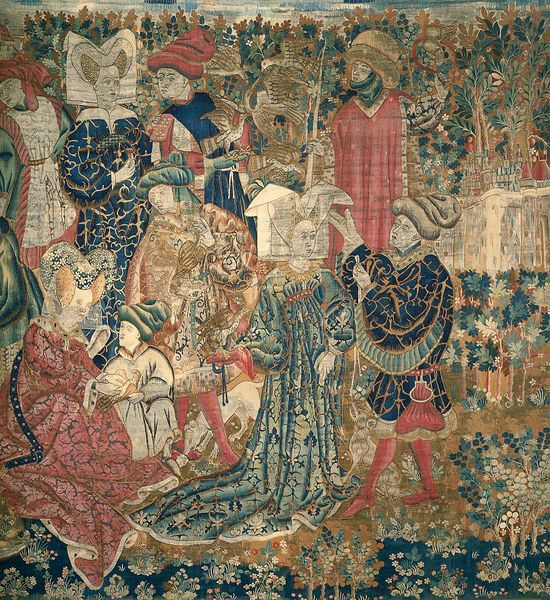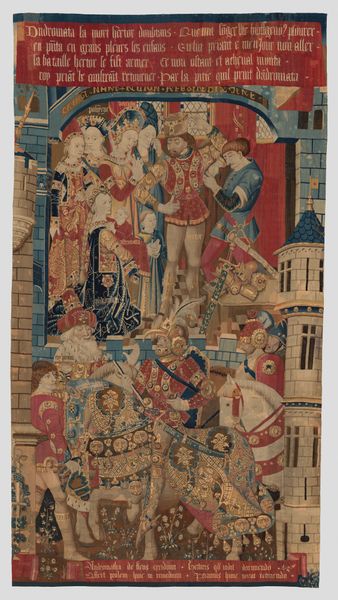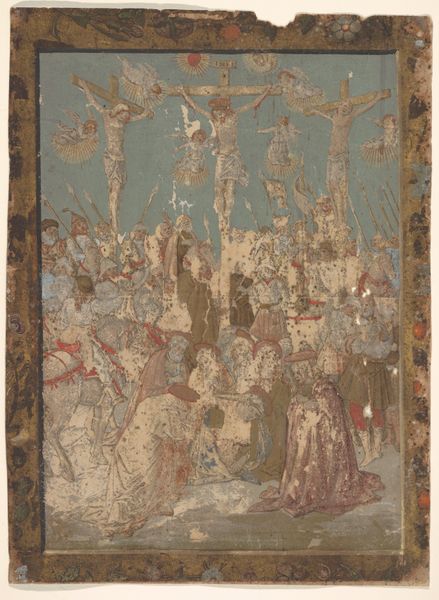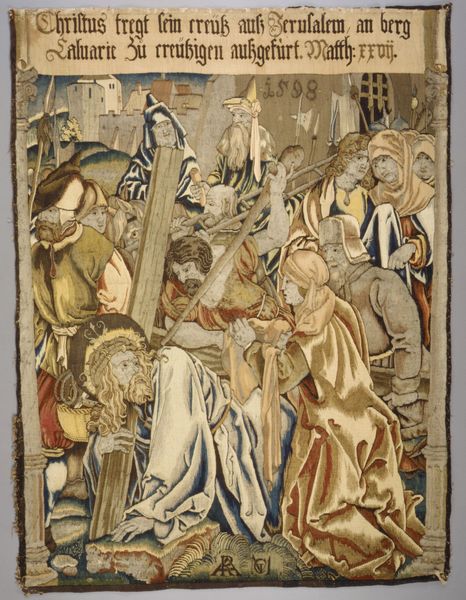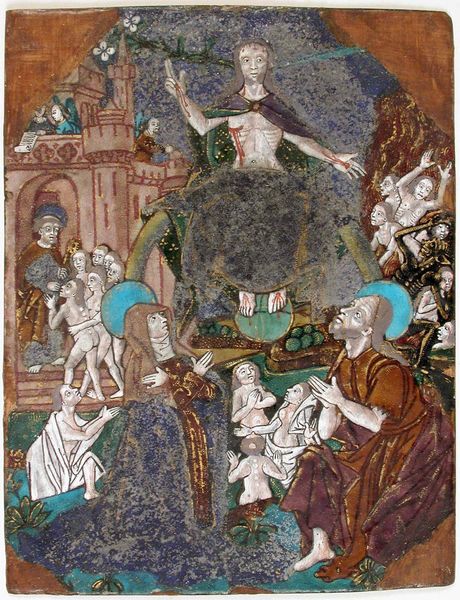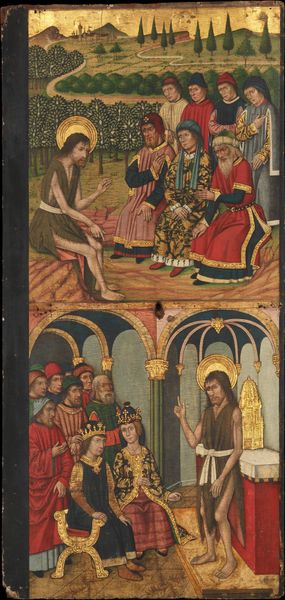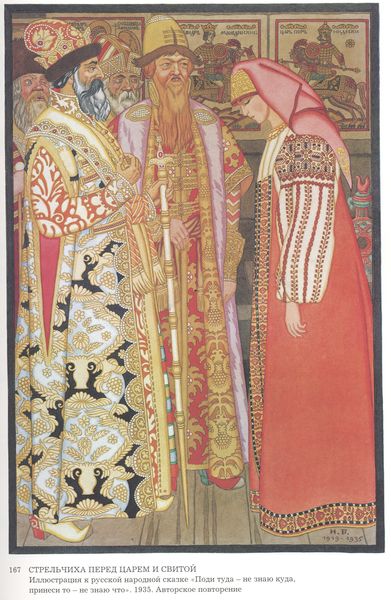
silk, textile
#
medieval
#
narrative-art
#
silk
#
textile
#
figuration
#
painting art
#
history-painting
#
international-gothic
Dimensions: 134 3/4 x 128 in. (342.27 x 325.12 cm) (irregular)
Copyright: Public Domain
Editor: Here we have "Esther and Ahasuerus," a textile piece dating from around 1460 to 1485. It’s attributed to an anonymous artist and is currently at the Minneapolis Institute of Art. The work is incredibly detailed and busy! The scale seems grand. I’m curious about the medium and its impact. What do you see in this tapestry? Curator: For me, the most compelling aspect of this tapestry is the labor embedded within the silk. Consider the immense amount of work involved in creating such a detailed narrative. Each thread placed represents hours of skilled labor, reflecting the socio-economic conditions and craft guilds of the time. How does the medium of textile, a traditionally “lower” art form, affect our understanding of this biblical scene versus, say, a painting of the same subject? Editor: That’s a great point! Thinking about it as a textile, rather than a painting, does make me reconsider its place in art history. Does its functionality influence its value? Curator: Exactly! This tapestry served a purpose, perhaps as a wall hanging in a wealthy patron's home, both decorative and a display of wealth. Its creation involved specialized weavers, dyers, and potentially designers. This division of labor speaks volumes about the economic and social hierarchies of the period. Who consumed such objects and how did their consumption reflect their power? Editor: So it’s not just the final product but the entire system that created it? Curator: Precisely. Think about the trade routes involved in obtaining silk, the workshops where artisans toiled, and the elite circles who purchased and displayed these works. Each step tells a story about the material conditions of 15th-century society. How does thinking about the ‘means of production’ alter your interpretation of the scene depicted? Editor: I hadn’t considered the silk itself as part of the story. It's fascinating to realize how much this artwork can tell us about history beyond the biblical narrative. Curator: Absolutely. It encourages us to examine art not just as an aesthetic object, but as a product of complex social, economic, and material forces. Editor: I’ll definitely be looking at tapestries, and art in general, with fresh eyes now, thinking about the hands and materials that shaped them.
